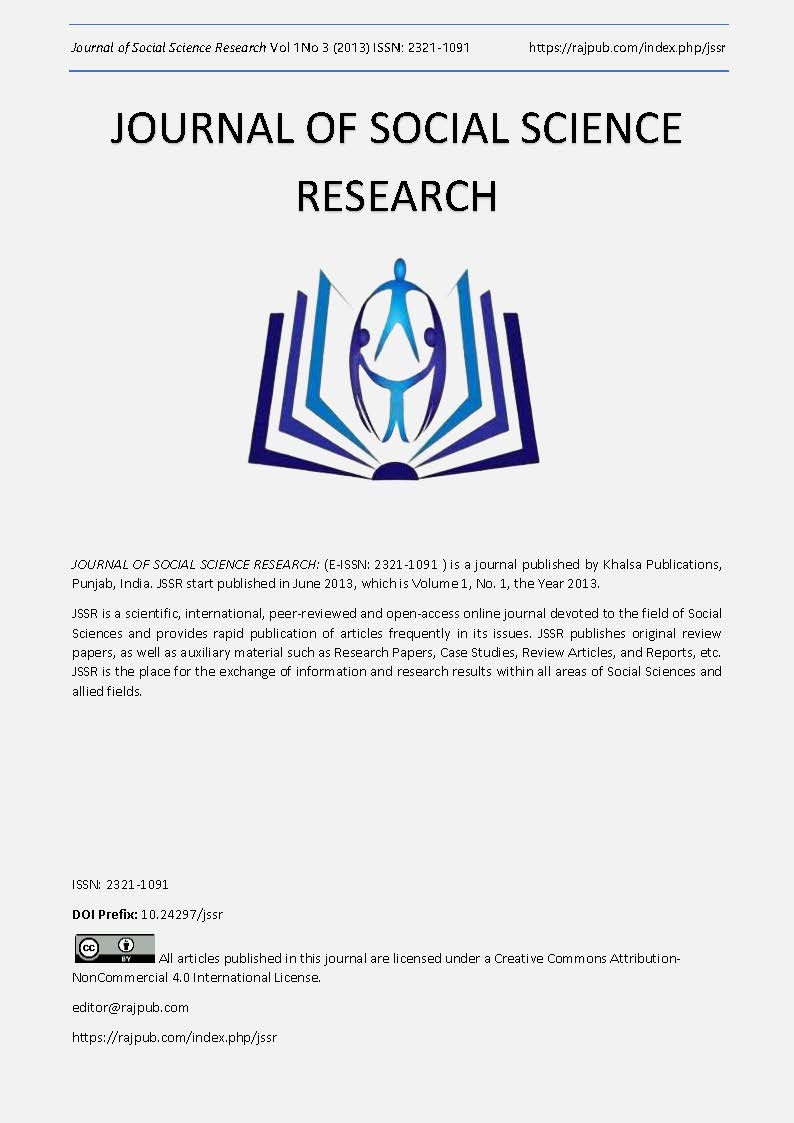Key sectors of Optimal Economic Restructuring Constrained by Environmental Protection: A Structured Input-Output Analysis Approach
DOI:
https://doi.org/10.24297/jssr.v1i3.6671Keywords:
Economic restructuring, key sectors, input-output analysis, eco-friendly economic development, GDP maximization, CO2 emissions restriction.Abstract
This paper introduces a tool to discover key sectors of a national or regional economy whose shares should be adjusted to offer optimal economic development constrained by environmental protection. The suggested approach uses an appropriately structured input-output model to find the projected gradient of economic development and the projected antigradient of CO2 emissions. The former is measured as Gross Domestic Product (GDP), the latter, as energy consumption. A linear combination of the two, in a proportion corresponding to the relative importance of GDP and CO2 emissions, determines the direction of optimal economic restructuring. It provides the maximum weighted difference between an increase in the GDP and a decrease in CO2 emissions. The main components of the direction vector show the key sectors. One of the advantages of the suggested approach is its reliance on gross output, final product, and energy consumption only; it does not use the intermediate inputs in the calculations. The United States case study is considered as an example.
Downloads
References
[2] Bullard, C and Herendeen, R. 1975. The energy costs of goods and services. Energy Policy, 1(4), 268–277.
[3] Bullard, C., Penner, P. and Pilati, D. 1978. Energy anslysis handbook. Resources and Energy, 1, 267-313.
[4] Butnar, I. and Llop, M. 2011. Structural decomposition analysis and input-output subsystems: Changes in CO2emissions of spanish service sectors (2000-2005). Ecological Economics, 70(11), 2012-2019.
[5] Casler, S. and Wilbur, S. 1984. Energy input-output analysis: A simple guide. Resources and Energy, 6(2),187–201.
[6] Cellura, M., Di Gangi, A., Longo, S. and Orioli, A. 2013. An Italian input-output model for the assessment of energyand environmental benefits arising from retrofit actions of buildings. Energy and Buildings, 62, 97-106.
[7] Cumberland, J. 1966. A regional inter-industry model for analysis of development objectives. Papers of the regionalscience association , 17, 65-94.
[8] Färe, R., Grosskopf, S., Lovell, C. and Pasurka, C. 1989. Multilateral productivity comparisons when some outputsare undesirable: A nonparametric approach. The Review of Economics and Statistics 71: 90–98.
[9] Flaschel, P. 1982. Input-output technology assumptions and the energy requirements of commodities. Resources and Energy, 4, 359-389.
[10] Ghosh, A. 1964. Experiments with Input - Output Models. Cambridge: Cambridge University Press.
[11] Griffin, J. 1976. Energy input-output modeling, Palo Alto, California: Electric power research institute.
[12] Guo, J, Lawson, A. and Planting, M. 2002.. From Make–Use to Symmetric I–O Tables: An Assessment of Alternative Technology Assumptions, U.S. Department of Commerce, Bureau of Economic Analysis, Working Paper WP2002-03.
Available at www.bea.gov.
[13] Leontief, W. 1970. Environmental repercussions and the economic structure. An input-output approach. Review of Economics and Statistics, 52(3), 262–271.
[14] Leontief, W. 1986. Input - Output Economics. 2nd. Ed. Oxford University Press, New York.
[15] Lin, G. 1998. Energy development and environmental constraints in China.Energy Policy, 26(2),119–128(10).
[16] Maital, S. and Vaninsky, A. 2000. Productivity Paradoxes and their Resolution. Journal of Productivity Analysis, 14(3), 191-207.
[17] Mayer, H. and Flachmann, C. 2011. Extended Input-Output Model for Energy and Greenhouse Gases. Final Report. Federal Statistical Office Germany, Environmental-Economic Accounting.
[18] Meerovich, V. Turnover of Financial Funds and Efficiency of Production. (Oborot Sredstv i Effektivnost' Proizvodstva), Finance, Moscow. (In Russian.)
[19] Su, B. and Ang, B. 2013. Input-output analysis of CO2 emissions embodied in trade: Competitive versus noncompetitive imports. Energy Policy, 56, 83-87.
[20] Suh, S. (Ed.) 2009. Handbook of Input-Output Economics in Industrial Ecology, Dordrecht/Heidelberg/NewYork: Springer, 2009.
[21] U.S. Bureau of Economic Analysis, Composition of Gross Output by Industry, www.bea.gov/iTable/iTable.cfm?ReqID=5&step=1#reqid=5&step=4&isuri=1&402=25&403=1 (accessed June 11, 2013).
[22] U.S. Bureau of Economic Analysis, Industry-by-Industry Total Requirements after Redefinitions, www.bea.gov/iTable/iTable.cfm?ReqID=5&step=1#reqid=5&step=102&isuri=1&405=Sec&406=10&402=15&403=2&4
04=7 (accessed June 11, 2013..
[23] U.S. Energy Information Administration, International Energy Outlook 2011.
http://www.eia.gov/forecasts/ieo/emissions.cfm (accessed June, 11, 2013)
[24] Vaninsky, A. 2006. Computational Method of Finding Optimal Structural Change in Economic Systems: An Inputoutput
Projected-gradient Approach. Journal of Interdisciplinary Mathematics, 9(1), 61 - 76.
[25] Vaninsky, A. 1987. Factorial Analysis of Economic Activity. (Factornyi Analiz Khozyaistbennoi Deyatel'nosti),
Finance and Statistics, Moscow. (In Russian)
[26] Vaninsky, A. 1984. Generalization of the integral method of economic analysis to interconnected and derived factors.
Automation and Remote Control, 44 : 8:2, 1074 - 1083.
[27] Vaninsky, A. 2009. Structural Change Optimization in Input - Output Models. Journal of Interdisciplinary Mathematics,
12(6), 839 – 861.
[28] Vaninsky, A. and Meerovich, V. Problems of the methodology of analysis of the impact of structural change on the
indicators of production efficiency. (Voprosy metodologii analiza vliyaniya strukturnykh sdvigov na pokazateli
effectivnosti proizvodstva.) Proceedings of the National Scientific Conference "Economic Leverages of the Efficiency
of Using Material, Labor, Financial, and Natural Resourses", 2, 105 - 107, Central Economic - Mathematical Institute,
Moscow, 1978. (In Russian)
[29] Wang, Y. and Liang, S. 2013. Carbon dioxide mitigation target of China in 2020 and key economic sectors. Energy
Policy, 58, 90-96.
Downloads
Published
How to Cite
Issue
Section
License
 All articles published in Journal of Advances in Linguistics are licensed under a Creative Commons Attribution 4.0 International License.
All articles published in Journal of Advances in Linguistics are licensed under a Creative Commons Attribution 4.0 International License.




